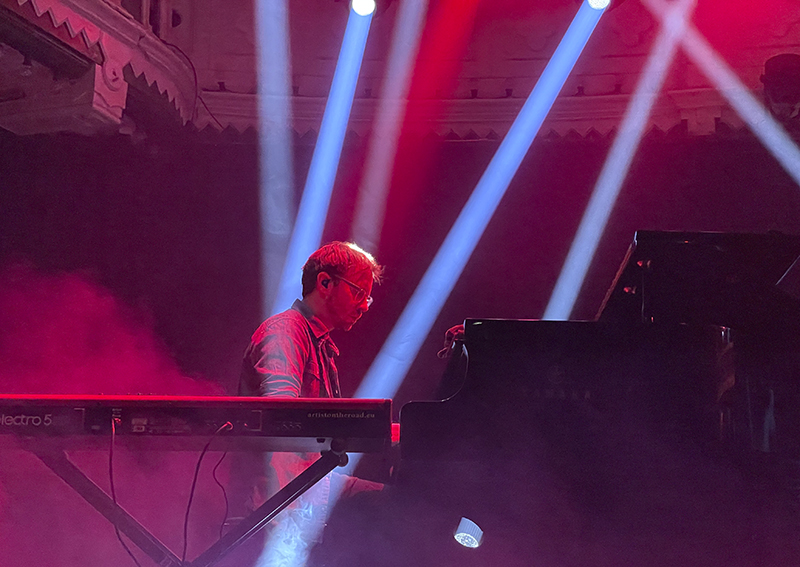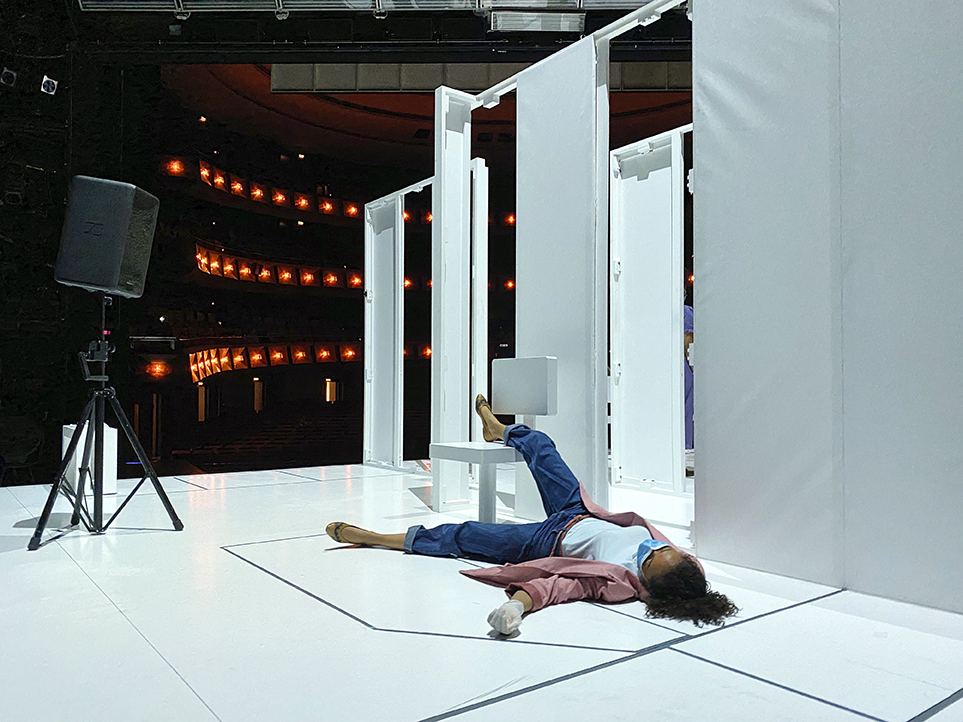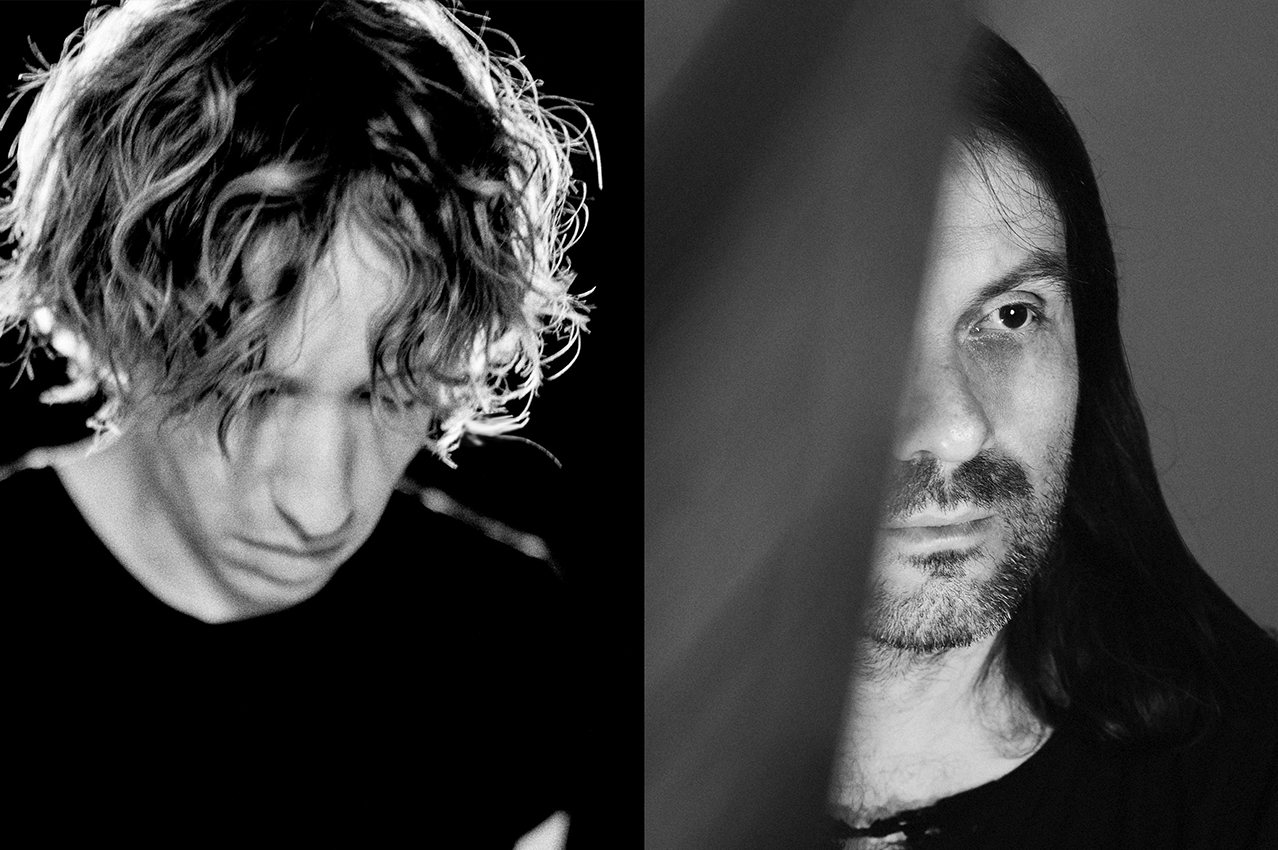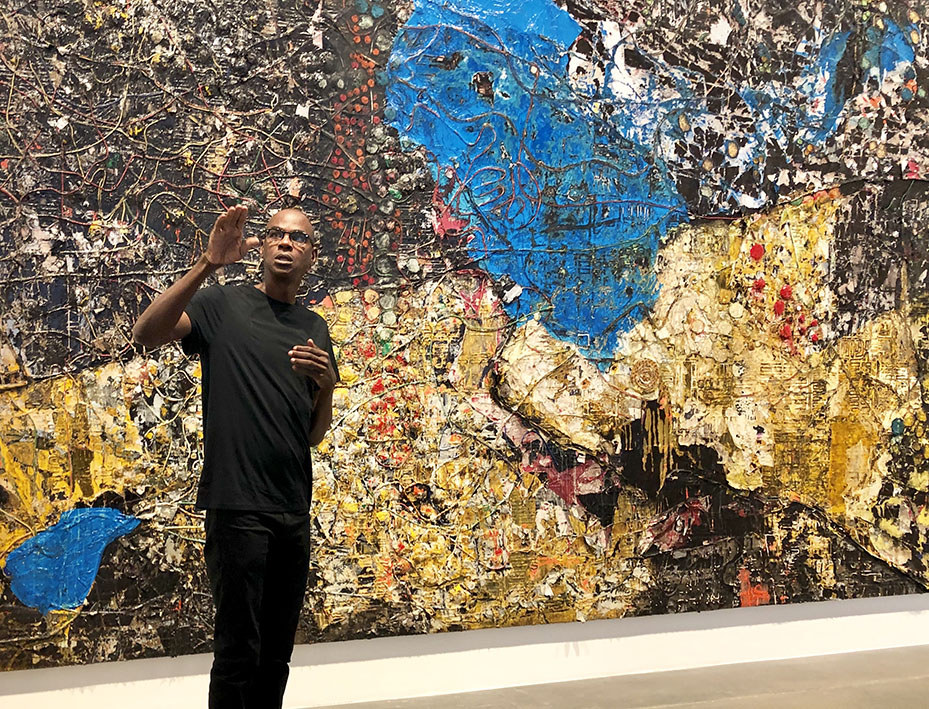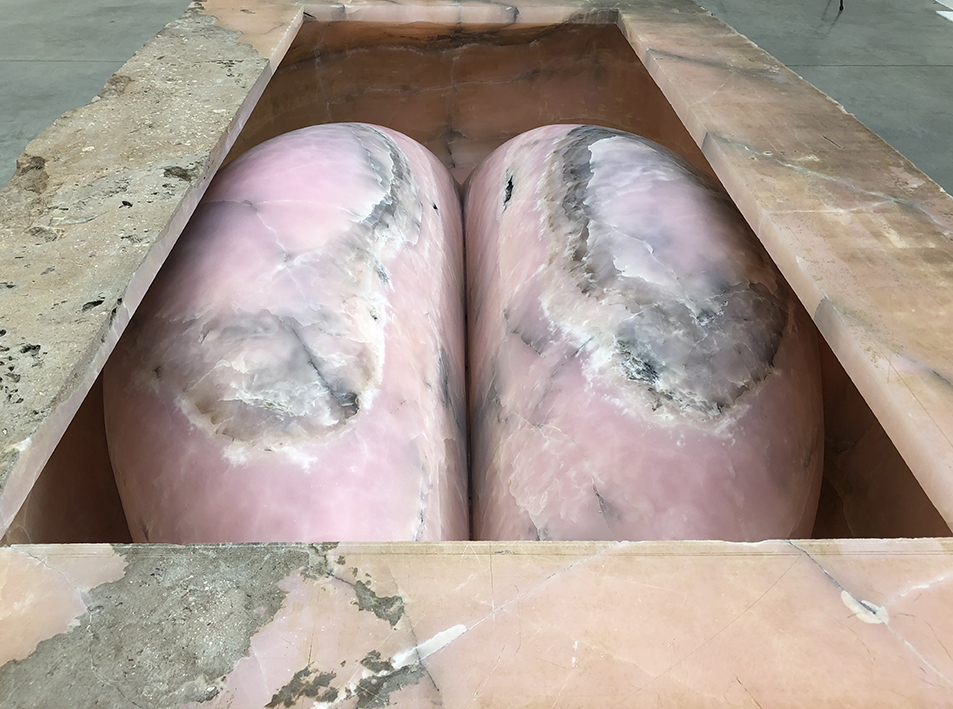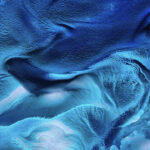 Hendrik Weber, aka Pantha Du Prince, interweaves minimal techno with Baroque electronics. His music is mysterious and intoxicating with moments of fragile silence in its loops and drones. His early work, tracks such as ‘Sach mal Baum’ and ‘Florac’, are experimental, rough like a diamond, pulsating, raising the heartbeat on the dance floor. The structure and atmosphere of his work is reminiscent of Sandoz and Sweet Exorcist (pseudonym of Richard H. Kirk / Cabaret Voltaire) but it’s more akin to a fairytale.
The cover of his last album ‘Black Noise’, features a fairytale image – a painting of a picturesque village bordering on a lake in the Swiss Alps – an image of which Bob Ross would approve. The cover depicts peace and harmony, but it is deceptive. The title of the album provides the first hint, as black noise is a frequency inaudible to man and connected to natural disasters, such as earthquakes and Tsunamis.
One of the inspirations of the album was the location in the Swiss Alps where Weber and his collaborators stayed during the time they made the sound recordings of nature. Coincidently, they discovered that the house where they were residing was standing next to a pile of debris formed by a landslide that had buried a complete village. The cover image triggers a feeling of melancholia that is also reflected in the music of ‘Black Noise’. It’s accessible, melodic and dreamlike sweet, but also ominous, layered (real sounds on top of synthetic sounds) and complex, with a lot occurring under the surface. There is something unsettling in the music of ‘Black Noise’, just like the fairy tales of the Brothers Grimm.
Nature and technology have been a fascination for Weber since his childhood. He grew up in the mountain forests of Northern Hesse, Germany, an area also called ‘Hessian Siberia’ that had cold winters and snow covered landscapes. As a child, Weber would go into the woods and, through the huge trees, he would see a large Volkswagen factory plant near his hometown, Kassel. His childhood surroundings are a reason as to why nature and technology are so omnipresent in his music.
200% met with Weber after his sound check for his 1.30am gig at the Alpha-Ville Festival in London. The organisers had arranged for the interview to be conducted on the rooftop terrace of the XOYO venue. As it was a warm September evening it sounded like a good idea to conduct the interview in that location, but, the sound of the next act’s sound check was pumping through the walls. Journalists always become worried that this type of sound affects the recording of the conversation, which will make the transcribing of the interview – not the most exciting part of his job – more difficult as it becomes more harder to hear what the interviewee is saying and tapes have to be played back and forth.
Weber understood my concern and joked “you would have wished the sound would be Black Noise” which broke the ice. Fortunately, in the end, it transpired that the sound quality of the recording was not affected so here are Weber’s viewpoints on the beauty of electronic music, and his arresting theory as to why Germany has a rich tradition of electronic music.
200%: Can you explain, without becoming too technical, how do you create your music?
Hendrik Weber: For my music I’m interested to go to these moments of instability where you can influence certain parameters, but you’re not capable of controlling the whole situation – you are not the God of the situation.
It’s like my idea of the machines having their own communication with themselves; I’m just a spectator watching what they are doing and listening to what comes out. I try to create a neurological system that creates errors from time to time and I’m interested in these errors, strange fall out parts, black out parts, where you don’t know what is really going on, asking “what is this?”
I ‘feed’ the machines with source material, which I create in sessions with other people, for example, Joachim Schütz. We create sounds in these sessions, such as recording the sound of rain dropping on a window. I have a treasure box of all kind of experimental and weird sounds. Then, on my own, I try to create tracks out of these sounds.
200%: As you interested into the latest technology, how do you feed yourself with new information?
HW: I open up my antennas and keep my brains open. These days people tend to think that when you go to a certain blog, you secure new ideas, but it’s not like that. The web provides a lot of knowledge, but it’s knowledge that is not digested through your body, you haven’t experienced it yourself. For me it’s more important to talk to people than to be on a certain blog that is super-nerdy.
I believe in face to face discussions with people, whether in the studio or with friends whom I invite to my house for dinner. This is, basically, my resource of knowledge; by exchange, I obtain new ideas. It’s more interesting to talk with someone about how to use a machine or how to build up an installation to record a sound so you arrive quickly to these points where you’re questioning what you’re doing and your creative process. You reflect on it. You can also do it by chat on your computer but I prefer sitting face to face and discussing these aspects.
Hendrik Weber, aka Pantha Du Prince, interweaves minimal techno with Baroque electronics. His music is mysterious and intoxicating with moments of fragile silence in its loops and drones. His early work, tracks such as ‘Sach mal Baum’ and ‘Florac’, are experimental, rough like a diamond, pulsating, raising the heartbeat on the dance floor. The structure and atmosphere of his work is reminiscent of Sandoz and Sweet Exorcist (pseudonym of Richard H. Kirk / Cabaret Voltaire) but it’s more akin to a fairytale.
The cover of his last album ‘Black Noise’, features a fairytale image – a painting of a picturesque village bordering on a lake in the Swiss Alps – an image of which Bob Ross would approve. The cover depicts peace and harmony, but it is deceptive. The title of the album provides the first hint, as black noise is a frequency inaudible to man and connected to natural disasters, such as earthquakes and Tsunamis.
One of the inspirations of the album was the location in the Swiss Alps where Weber and his collaborators stayed during the time they made the sound recordings of nature. Coincidently, they discovered that the house where they were residing was standing next to a pile of debris formed by a landslide that had buried a complete village. The cover image triggers a feeling of melancholia that is also reflected in the music of ‘Black Noise’. It’s accessible, melodic and dreamlike sweet, but also ominous, layered (real sounds on top of synthetic sounds) and complex, with a lot occurring under the surface. There is something unsettling in the music of ‘Black Noise’, just like the fairy tales of the Brothers Grimm.
Nature and technology have been a fascination for Weber since his childhood. He grew up in the mountain forests of Northern Hesse, Germany, an area also called ‘Hessian Siberia’ that had cold winters and snow covered landscapes. As a child, Weber would go into the woods and, through the huge trees, he would see a large Volkswagen factory plant near his hometown, Kassel. His childhood surroundings are a reason as to why nature and technology are so omnipresent in his music.
200% met with Weber after his sound check for his 1.30am gig at the Alpha-Ville Festival in London. The organisers had arranged for the interview to be conducted on the rooftop terrace of the XOYO venue. As it was a warm September evening it sounded like a good idea to conduct the interview in that location, but, the sound of the next act’s sound check was pumping through the walls. Journalists always become worried that this type of sound affects the recording of the conversation, which will make the transcribing of the interview – not the most exciting part of his job – more difficult as it becomes more harder to hear what the interviewee is saying and tapes have to be played back and forth.
Weber understood my concern and joked “you would have wished the sound would be Black Noise” which broke the ice. Fortunately, in the end, it transpired that the sound quality of the recording was not affected so here are Weber’s viewpoints on the beauty of electronic music, and his arresting theory as to why Germany has a rich tradition of electronic music.
200%: Can you explain, without becoming too technical, how do you create your music?
Hendrik Weber: For my music I’m interested to go to these moments of instability where you can influence certain parameters, but you’re not capable of controlling the whole situation – you are not the God of the situation.
It’s like my idea of the machines having their own communication with themselves; I’m just a spectator watching what they are doing and listening to what comes out. I try to create a neurological system that creates errors from time to time and I’m interested in these errors, strange fall out parts, black out parts, where you don’t know what is really going on, asking “what is this?”
I ‘feed’ the machines with source material, which I create in sessions with other people, for example, Joachim Schütz. We create sounds in these sessions, such as recording the sound of rain dropping on a window. I have a treasure box of all kind of experimental and weird sounds. Then, on my own, I try to create tracks out of these sounds.
200%: As you interested into the latest technology, how do you feed yourself with new information?
HW: I open up my antennas and keep my brains open. These days people tend to think that when you go to a certain blog, you secure new ideas, but it’s not like that. The web provides a lot of knowledge, but it’s knowledge that is not digested through your body, you haven’t experienced it yourself. For me it’s more important to talk to people than to be on a certain blog that is super-nerdy.
I believe in face to face discussions with people, whether in the studio or with friends whom I invite to my house for dinner. This is, basically, my resource of knowledge; by exchange, I obtain new ideas. It’s more interesting to talk with someone about how to use a machine or how to build up an installation to record a sound so you arrive quickly to these points where you’re questioning what you’re doing and your creative process. You reflect on it. You can also do it by chat on your computer but I prefer sitting face to face and discussing these aspects.
 200%: Kraftwerk, Alva Noto, Byetone, Apparat – they all come from Germany. Can you explain why Germany has a rich tradition of electronic music?
HW: First of all, as you work with machines, it’s the idea of nerdiness, the idea of precision, the idea of order, discipline and self-discipline.
Secondly, there is this feeling of guilt in Germany after the Second World War. This is the reason why Techno-music was so important for the country as you could express yourself without running after a leader, after a singer-songwriter; you don’t want another Adolf standing up there telling you what to do. I think the whole war created a need for new forms of expression as there was this guilt and people wanted democracy. The collective became very important where everybody is equal in the band and there is not one guy, a dogmatic singer-songwriter, saying “we’re doing it like this”. This sets you in another state of mind, which is reflected in the music.
200%: Most people will understand the beauty in classical music. Can you explain the beauty of electronic music?
HW: It creates its own history, which gives it a lot of freedom to tell stories that haven’t been told. As soon as you work with classical music you work with a certain history. When you hear the sound of a violin, immediately you’re remembering, 500-600 years of human kind. Electronic music has the ability to go into a field that is new, not connected to a deeper history.
200%: Also in electronic music, surely, you’re also connected to history in music or connected to history of technology.
HW: Yes, but you can explore from there and explore new universes. It’s still free of connotations. That’s the big opportunity of electronic music and that’s why I’m doing it.
200%: Do you think this is just the early beginning of electronic music?
HW: Absolutely, we’re only in the kindergarten of electronic music. We’re already doing a lot. As soon as the resolution goes higher and higher, though, and the systems become better and better, we will end up in receiving the world new I think. If the resolution is higher we will be able to receive sound as something even more physical. If, for example, you can touch sound, it materializes in a more concrete way, and the human will be able to experience a whole new reality a whole new idea of space and all the dimensions will be explored. Even time as an energy will be part of this, maybe we will be able to influence time…
Interview written and conducted by Thierry Somers with a contribution by Marcel Harlaar.
200%: Kraftwerk, Alva Noto, Byetone, Apparat – they all come from Germany. Can you explain why Germany has a rich tradition of electronic music?
HW: First of all, as you work with machines, it’s the idea of nerdiness, the idea of precision, the idea of order, discipline and self-discipline.
Secondly, there is this feeling of guilt in Germany after the Second World War. This is the reason why Techno-music was so important for the country as you could express yourself without running after a leader, after a singer-songwriter; you don’t want another Adolf standing up there telling you what to do. I think the whole war created a need for new forms of expression as there was this guilt and people wanted democracy. The collective became very important where everybody is equal in the band and there is not one guy, a dogmatic singer-songwriter, saying “we’re doing it like this”. This sets you in another state of mind, which is reflected in the music.
200%: Most people will understand the beauty in classical music. Can you explain the beauty of electronic music?
HW: It creates its own history, which gives it a lot of freedom to tell stories that haven’t been told. As soon as you work with classical music you work with a certain history. When you hear the sound of a violin, immediately you’re remembering, 500-600 years of human kind. Electronic music has the ability to go into a field that is new, not connected to a deeper history.
200%: Also in electronic music, surely, you’re also connected to history in music or connected to history of technology.
HW: Yes, but you can explore from there and explore new universes. It’s still free of connotations. That’s the big opportunity of electronic music and that’s why I’m doing it.
200%: Do you think this is just the early beginning of electronic music?
HW: Absolutely, we’re only in the kindergarten of electronic music. We’re already doing a lot. As soon as the resolution goes higher and higher, though, and the systems become better and better, we will end up in receiving the world new I think. If the resolution is higher we will be able to receive sound as something even more physical. If, for example, you can touch sound, it materializes in a more concrete way, and the human will be able to experience a whole new reality a whole new idea of space and all the dimensions will be explored. Even time as an energy will be part of this, maybe we will be able to influence time…
Interview written and conducted by Thierry Somers with a contribution by Marcel Harlaar.


